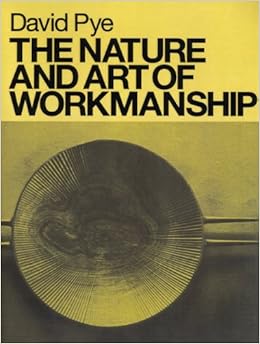The Nature and Art of Workmanship

My illness is preventing me from being in the shop being a maker. I love making things. I do a mix of my own stuff and copying what I see around me. Even when copying others designs and ideas, I impart a little of my own sensibility, sometimes to a positive affect sometimes not. While I can't get in the shop to make, I can read and write about the maker ethos.
Reading David Pye’s book The Nature and Art of Workmanship. I noticed that he was not comparing Art and Craft (he calls craftsmanship - workmanship). He looks at workings of workmanship. He uses a few terms to define the art of workmanship.
Free workmanship - outcome is an approximation if intent Regulated workmanship - outcome looks like intended repeatably
Workmanship of risk - outcome determined by worker Workmanship of certainty - outcome determined by machine/designer
I find these helpful in thinking about what I do. I tend to favor in my work a Free Workmanship of risk. He is careful not to disparage Regulated work or in some instances Workmanship of certainty. Each type of workmanship has its place. Like a scientist, he provides examples for his assertions unlike John Ruskin and William Morris, two influential figures in transition to modern workmanship. These writers railed against regulated workmanship of certainty. But according to Pye, they invoked Christianity as reason not to do regulated work. All there pointing to the harm that regulated workmanship of certainty caused was not backed up in reality. Pye points out gaps in their ideas.
One more chapter to go The aesthetic importance of workmanship, and its future.